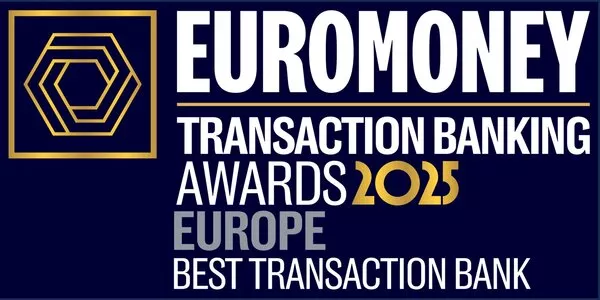
Trade finance: moving in the right direction as confidence grows
Despite the massive slowdown that we have witnessed in recent months as a result of government reaction globally to the Covid-19 pandemic, suppliers around the world continue to benefit from access to good and inexpensive products and well established infrastructures for trade and trade finance.
The path to digitisation will continue, albeit maybe not as fast as planned due to a potential reduction of investments in the context of the current crisis.
Countries and certain industry sectors such as ports, transportation and shipping are leading the way in digitisation. Asia is pushing strongly on in the use of digital channels, with large Chinese e-commerce platforms looking to build international trade platforms for corporates followed by major Nordic corporates, including Nokia, Volvo and Ericsson.
The evolution of concerns
Against a backdrop of widespread uncertainty and even outright confusion, client concerns remain broadly the same and match the concerns expressed by banks. The main areas of focus centre upon paper-based exchanges and manual processes triggering slow turnaround times and lack of security, KYC (know your client) and KYS (know your supplier) imperatives, compliance requirements, lack of connectivity between all parties involved and last but not least the governance of data (in short, who is authorised to see what?).
To solve those issues, digitisation can be used to: make transactions more secure, a clear benefit both for banks and their corporate clients; improve cost efficiency in document checking in the context of the relentless pressure for banks to improve their core operating model; acquire and develop real-time reporting tools for tracking and accounting transactions for all parties; certify the electronic identity of all participants issuing and signing documents, i.e. certify the “digital twin” (the digital representation of an existing machine, process or organisation), leading to greater accuracy.
Progress is progress
Banks are making progress on different elements, some of which might not be visible when viewed separately but which still represent a leap in the right direction. This includes achieving progress on: pre-checking documents (for compliance purposes) using Optical Character Recognition and machine learning, a process which delivers gains in terms of productivity and increased security.
In addition, we have accelerated the global roll-out of electronic signature for all our Global Transaction Banking Products and geographies during the Covid-19 period, reducing the need for the traditional and cumbersome exchange of signed documents via post.
A number of banks are becoming increasingly mature on platforms and on ecosystems for the speed and security of transactions (we.trade is live for European SMEs, for example) and are open to working with fintech firms.
The next phase
We believe that the next phase should be to improve the interoperability of platforms/ecosystems of all trade counterparties and connectivity with corporate ERP (enterprise resource planning) systems.
A growing number of countries and corporates are coming into the game and have an important role to play. The EU’s electronic freight transport information regulation (eFTI), for example, is scheduled to take effect from August 21 2024. It is designed to encourage the digitisation of freight transport and logistics to reduce administrative costs, improve enforcement capabilities of competent authorities, and enhance the efficiency and sustainability of transport.
Countries like Singapore, Hong Kong and Dubai are also moving forward and the International Chamber of Commerce (ICC) has restarted its own work on setting global standards while shipping companies via Tradelens are also looking to set global standards.
In conclusion
We are willing to work on new channels of communication built by our clients and are working on APIs in order to be ready to connect to corporate platforms in due course.
A number of obstacles remain, mostly linked to ID recognition and to access and governance of data, but it is essential to maintain momentum and go beyond ideas and proofs of concept. With this end in mind, we think the best next step is to design production-ready trade digital solutions which are supported by an extensive cross-industry ecosystem and deploy them with an early adopter group of corporates, banks and supply chain stakeholders.
Projects such as we.trade, Marco Polo, Contour and Trade Information Network have all matured in recent times and are increasingly demonstrating their fundamental potential value.
The key remaining issue currently facing the industry is to convince more users of the value of this service. In so doing, we could bring about an enlargement of their client base, and strive to achieve a critical mass even if gaps persist in coverage in supply chain digitisation.




